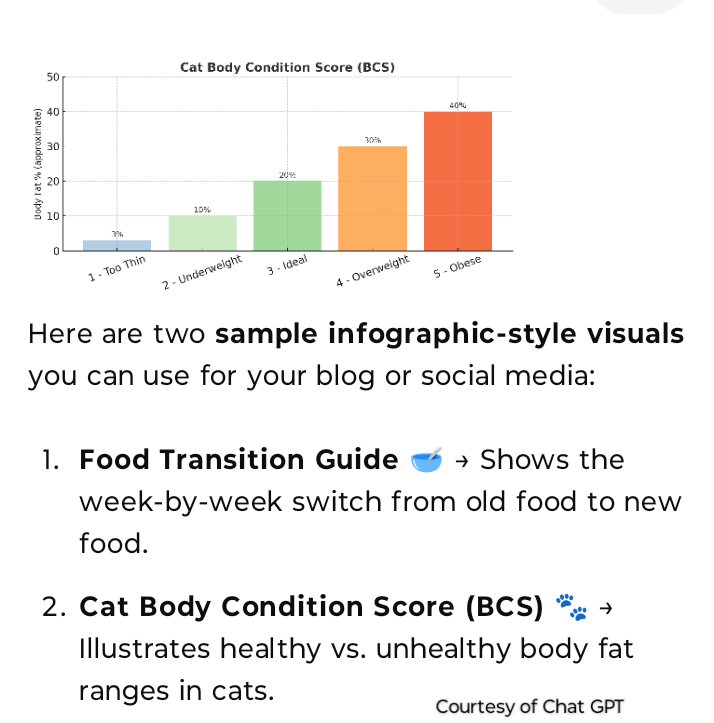A Complete Guide to Cat Nutrition, Digestion and Feeding
A Complete Guide to Cat Nutrition, Digestion, and
Feeding
Cats are fascinating creatures—not just in how they act, but in how their bodies process food. By understanding your cat’s unique nutritional needs, you can help them stay healthy, happy, and thriving at every stage of life.
How Cats Eat and Digest Food
Cats chew differently than humans or dogs. Their front teeth are designed for tearing and biting, while their back teeth handle most of the chewing. But unlike us, cats often swallow food in chunks with only minimal chewing—a habit passed down from their wild ancestors.
⏱ Digestion time: On average, it takes about 12 hours for a cat to digest a meal.🚫 Important: Cats cannot safely digest large bones (like chicken bones).
🔹 Did You Know?Wild cats spent more time chewing than today’s domestic cats, who have become faster eaters thanks to modern feeding habits.
Nutritional Needs by Life Stage
🐾 Kittens
High protein for muscles, bones, and growth
Energy-rich diet for play and growth spurts
🔹 Quick Tip: Feed kittens more frequently (3–4 meals a day) since their little stomachs can’t hold much at once.
🐾 Adult Cats
Protein for muscle repair
Fiber for digestion
Vitamins & minerals for immunity
Fish oil for coat and skin
Taurine for heart and eye health
🐾 Senior Cats
Lower calories to prevent weight gain
High protein & fiber to maintain strength
Healthy fats to support aging joints
Feline Pregnancy Timeline
A cat’s pregnancy typically lasts 63 days, though Siamese cats may carry a bit longer.
📅 What happens week by week:
2 weeks → Embryos begin forming
3–4 weeks → Organ development begins; kittens can sometimes be felt
6 weeks → Pregnancy becomes obvious
7 weeks → Fur thins on belly to prep for nursing
9 weeks → Labor begins (can range from day 57–70)
Is Your Cat a Healthy Weight?
The Body Condition Score (BCS) helps measure if your cat is underweight, ideal, or overweight.
Score 1 (1–5% fat): Too thin
Score 2 (5–15% fat): Underweight
Score 3 (16–25% fat): Ideal
Score 4 (26–35% fat): Overweight
Score 5 (35%+): Obese
🔹 Quick Tip: You should be able to feel (but not see) your cat’s ribs easily. A visible waistline from above is also a sign of a healthy weight.
Feeding Guidelines
Transitioning to New Food
Switch food slowly to avoid upset stomachs:
Week 1 → ¾ old food + ¼ new food
Week 2 → ½ old food + ½ new food
Week 3 → ¼ old food + ¾ new food
What to Watch Out For
Cheap cat foods: Often contain fillers like by-products, cornmeal, and low-quality grains
“Too rich” foods: Can cause acid reflux or digestive discomfort
🔹 Did You Know?Cats that experience food insecurity may panic when their bowl is empty. Using smaller bowls with consistent feeding times can reduce stress.
Treats and Extras
Everyday treats → Best given in the morning to prevent late-night hyperactivity.
Dental treats → Offer 1 hour after meals to reduce plaque.
Calming treats → May help anxious cats, though results vary.
Herbs & greens → Healthy in moderation, but introduce slowly to avoid tummy upset.
Important: Always consult with your veterinarian before adding additional dietary changes to your cat's diet.
Final Thoughts
Cats may seem independent, but their health relies heavily on how we feed them. From kittens needing protein to seniors requiring special diets, nutrition plays a role in every stage of a cat’s life.
By balancing protein, fiber, vitamins, fats, and taurine, and being mindful about treats and feeding routines, you’ll set your cat up for a long, healthy, and happy life.
✨ Your cat’s food bowl is more than just a meal—it’s the foundation of their well-being.
